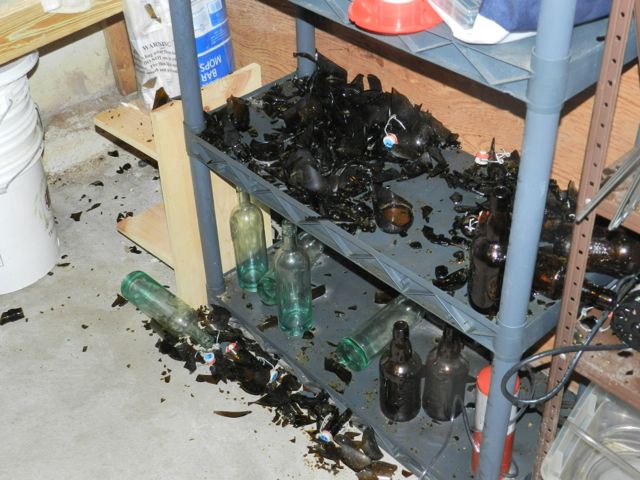How are you bottling? Are you adding sugar to each bottle? If you're bulk priming it doesn't matter what size bottles your using, you're dilluting the amount of priming sugar based on the volume of beer, NOT the size of the bottle. In fact even if you were to be adding sugar directly to the bottles the amount of sugar needed in a larger sized bottle of beer would be MORE for a pint bottle than a 12 ouncer.
If your beer is gushing in a larger volume of beer, more than likely your not accounting for the fact that the larger the bottle, the more time the beer needs to carb up- it takes longer to saturate the headspace in the bottle and saturate the beer with co2.
If you're openning the beer sooner than 3-4 weeks when the beer is at 70 degrees, then it's gushing because the co2 hasn't locked into solution yet.
If you watch Poindexter's video on time lapsed carbonation, you will see that in many instances, before a beer is carbed it my gush, that's not from infection, or mixing of sugars, but because the co2 hasn't evened out- it hasn't been pulled fully into the beer. Think of it as there's a lot of co2 being generated and most of it is in the headspace, not in the beer, so there's still "over pressure" in the bottle, so it gushes when it is opened.
But when the beer is truly carbed it all evens out, across the bottles.
[ame=http://www.youtube.com/watch?v=FlBlnTfZ2iw]time lapse carbonation - YouTube[/ame]
Not knowing yet what you're doings, I can say that the beers not gushing because of the size of the bottle, especially if you're using LESS sugar....it's for other reasons...More than likely because you're going by your 12 ounce bottle timeframe and openning the larger bottle too soon.






